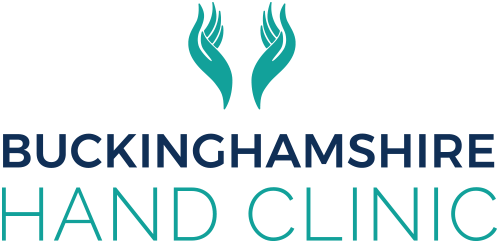Mr. Chennagiri consults at The Saxon hospital in Milton Keynes and at The Chiltern Hospital in Great Missenden. Please click here for further information or contact the appointments office at the relevant hospital for to book an appointment.
He sees NHS patients at Stoke Mandeville Hospital, Wycombe Hospital and at The Saxon Clinic.
Anaesthesia for upper limb surgery
Upper limb surgery can be performed under various types of anaesthesia. Each has its pros and cons. You will have an opportunity to discuss the details with the anaesthetic and decide on the best option.
Modern anaesthetic agents are very safe and you will be monitored throughout the procedure to ensure safety.
Local anaesthesia (field block): This is often performed by your surgeon. The operative area is infiltrated with a local anaesthetic drug. Commonly used drugs are lignocaine, bupivacaine and chirocaine. Lignocaine is effective quickly but the effects last for only a short-duration. It is allows for the procedure to be performed soon after the injection. Bupivacaine and Chirocaine take longer to start working but their effect lasts for several hours and thus can provide prolonged pain-relief after the operation.
Regional anaesthesia: A local anaesthetic drug is injected around a nerve (or a collection of nerves) to numb a part of the upper limb or the entire upper limb. For the latter, the nerves are blocked near your collarbone or near the armpit. Some anaesthetists perform the injection under ultrasound scan or nerve stimulator guidance, or both. (A nerve stimulator is a device that uses a small electric current to identify the nerves by making specific muscles in the arm twitch). The “nerve block” then has to take effect. You will be monitored and your arm “tested”, often with a cold spray, as it gradually goes numb. Many people report a “pins and needles” feeling while this develops. Once it has taken full effect, you should be able to remain fully conscious, but free from discomfort during your operation.
Even if your operation is only on a part of your hand, it may be necessary to make your whole arm go numb. This is most commonly because a tourniquet will be used on the upper arm. So for the duration of the surgery that area must also be numbed. Sometimes it is possible to combine short acting drugs to numb the upper arm, with longer acting ones to numb the area of the operation. This way the arm returns to normal relatively soon after the operation, while the operation site should stay comfortably numb for much longer.
Sedation: Sedative medications make you feel relaxed. They are generally given through a small tube in one of the veins in your arm or hand. (This tube is called a cannula). Usually you would still be able to communicate with the team when spoken to, but sometimes people forget what they’ve said. When given at higher doses you can fall asleep. You may require extra oxygen through a face-mask as your breathing can become shallower and less frequent than normal.
General anaesthesia: This is a state of controlled unconsciousness. You are given drugs (through a cannula) that mean you are unconscious and feel nothing. You are kept unconscious either through breathing a mixture of gases and / or more drugs given into your veins.
General anaesthesia: Very often a combination of the above options is chosen. For example, you may have a general anaesthetic but also the surgeon will apply local anaesthetic. Or you may have a regional anaesthetic, and also have sedation. Any of the above options can be combined. The decision on what type of anaesthetic is made based on your wishes (for example on whether you would prefer to stay awake), your general state of health and any medical conditions you have, and the type and duration of surgery. Different anaesthetic and surgical teams can develop expertise in managing the same conditions in different ways. So if you have the same procedure on each arm, you may be offered a different anaesthetic technique on both occasions. There should be an opportunity to discuss the options at your pre-operative visit. However, it is always best to confirm the anaesthetic options with your own anaesthetist, usually on the day of the operation.
